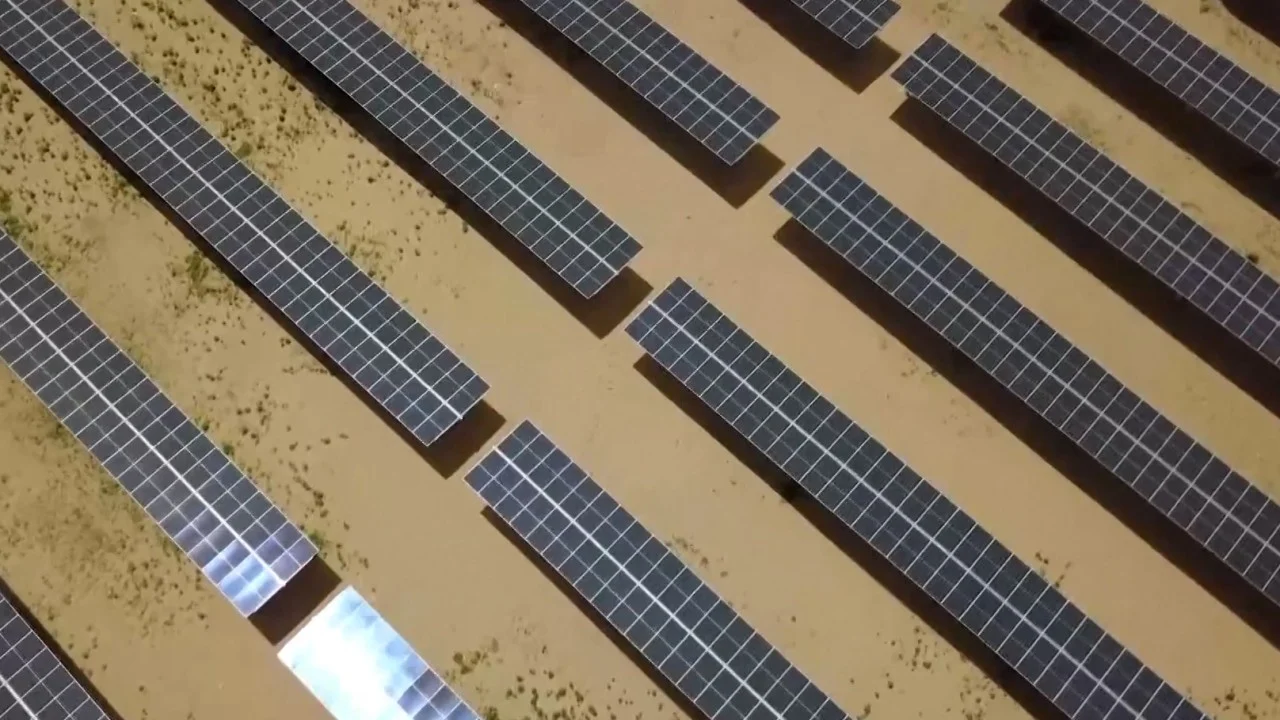Chinese state media reported that the largest hybrid solar-hydro power plant in the world, called Kela, began generating electricity on the eastern Tibetan Plateau on Sunday.

Chinese state media reported that the largest hybrid solar-hydro power plant in the world, called Kela, began generating electricity on the eastern Tibetan Plateau on Sunday.
According to state media, the plant can produce 2 billion kilowatt-hours of electricity annually, which is equivalent to the energy consumption of more than 700,000 households for a year, on the Yalong River plateau in Sichuan province, where 1 gigawatt of solar panels and 3 GW of hydropower generators are installed.
The solar-hydro power is a component of a massive renewable production base that the Chinese government intends to build in order to eventually produce clean energy for 100 million households along the 1,500 km long river, which is roughly equivalent to the US population.
The Kela solar-hydro power plant is the highest-altitude project of its kind in the world and is located on a mountain in Yajiang county, Ganzi prefecture, Sichuan. It is 4,600 metres (15,000 feet) above sea level and 1,000 metres higher than Lhasa, the highest city in the world.
The hybrid solar-hydro design makes use of hydropower’s reliable energy production to balance out solar energy’s erratic output.
The Lianghekou Hydropower Station, located 50 kilometres (31 miles) away, receives the electricity produced by the solar power station first through power lines. The power produced by the hydroelectric and solar power plants is then combined and fed into the grid.
Solar power generates more electricity during the day and less at night, and more on sunny days than on cloudy days. This design aids in balancing these variations.
Additionally, it enables the system to adjust power generation over a longer time span, increasing the output of hydropower during rainy seasons and solar power during dry seasons.
With this technology, the inherent weather dependence of solar power is addressed, along with the safe connection of solar power to the grid and waste prevention. According to state news agency Xinhua, “it serves as a good example for large-scale centralised development of clean energy in the world.”
The Kela plant is the first hybrid station with a gigawatt capacity in the entire world. The largest hybrid station at the time, Longyang Gorge in Qinghai province, had an 850,000kW capacity.
It is the initial stage of the Yalong River basin’s clean energy demonstration project. According to state media, the entire project had already reached a 20GW capacity and was on track to reach 50GW by 2030.
The Xinhua report stated that when the clean energy project is fully constructed, it will have a total capacity exceeding 100GW and produce roughly 300 billion kilowatt-hours yearly, enough for 100 million households. The Kela solar power station is notable for its size and intricate construction.
The solar panels are supported by 52,700 steel stakes that, if connected end to end, would span more than 1,400 km (870 miles). Nearly 50,000 tonnes of the steel used to construct the solar panel bracket could be used to construct a second “Bird’s Nest” National Stadium in Beijing.
The station, which has more than 2 million solar panels and a surface area of more than 16 square kilometres (6.2 square miles), can fully charge 15,000 electric vehicles with a range of 550 kilometres in one hour.
Construction workers had to endure extremely cold weather because the power station site is in the high plateau of western Sichuan, at 4,000 to 4,600 metres above sea level.
Construction is only feasible for a little more than half the year at that altitude. Workers had to install 7,000 support bases, 1,200 solar panel brackets, 33,000 solar panels, and 30 box transformers in less than 24 hours during the busiest period of construction.
The station currently produces enough clean electricity each year to meet the needs of about 700,000 typical households. According to Yang Zhiwei, project manager for Kela station, “it saves over 600,000 tonnes of standard coal annually, reducing carbon dioxide emissions by over 1.6 million tonnes.”